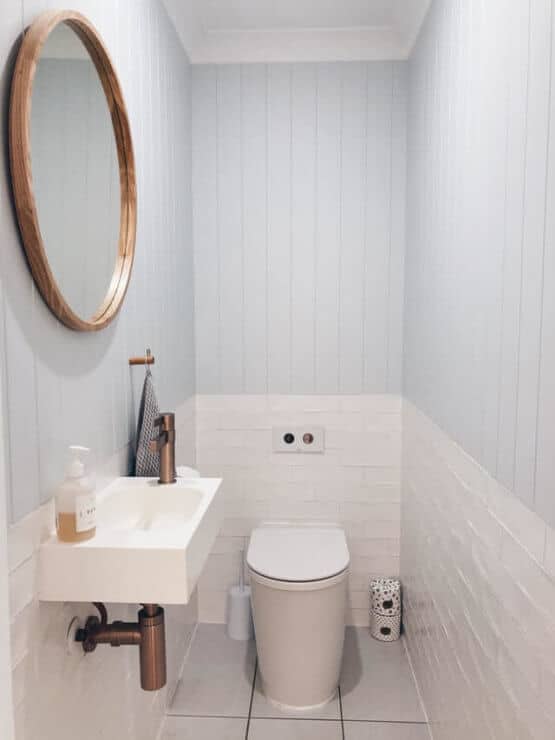Are you dealing with a drain clogged with hair?
Sometimes even if you use some hair stopper, hair may accumulate around the shower, and get into the drain later, when your drain stopper is not in place.
This is a common problem in households, and it could be easily fixed and prevented.
If your tub, shower, or bathroom sink drain started retaining water, you have a big chance that your drain is clogged.
In some cases, bigger amounts of human hair may clog the drain completely. Over time hair forms hairballs, which further collect everything that you let down the drain.
The first sign you may face will be a slower drain with a bad smell coming from it. This is a good sign that the hair down below started to decompose. Usually, it takes only 15-20 minutes to fix a drain clogged with hair.
For this job you will need:
- Rubber gloves to protect your hands
- A flashlight to see inside the drain
- A drain snake, wire hanger, or piece of dowel with a small diameter
- Baking soda and vinegar (optional)
- 12′ Channel-lock pliers (optional)
- Tweezers or needle-nose pliers
- Paper towels
7 Ways to Fix Drain Clogged With Hair
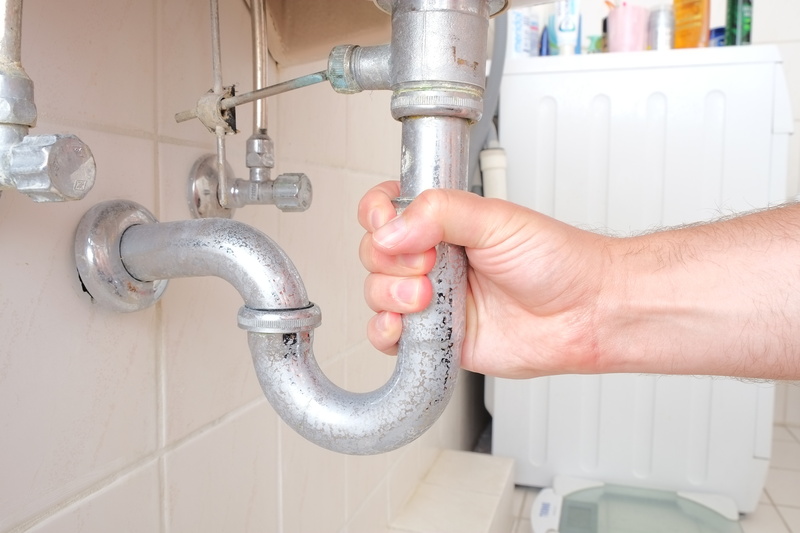
First, you should flashlight or light from your mobile phone, to see how much hair is down there. If it’s not blocked completely, you can start with some homemade solutions first.
Drain clogged with hair could be fixed without chemicals in 15-20 minutes. This is important to know in case your drains are connected to a septic tank.
1. Baking Soda And Vinegar
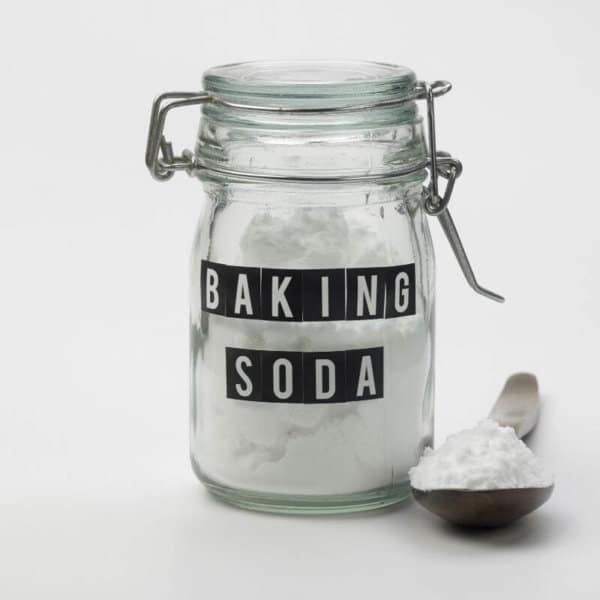
This method should be used to soften hair inside the drain. Do this before plunging it out. A combination of baking soda and vinegar may come in handy for a variety of different clogs, including drain clogged with hair.
As for additional steps, you may spray a small amount of dish soap, although this is not necessary. After that, you can pour a cup of vinegar and a few spoons of baking soda. You will need to wait for 5-10 minutes for the chemical reaction of these ingredients.
An alternative may be boiled water. I always recommend pouring half of liter of boiled water into the clogged drain. Boiled water may soften hair and push it down the drain.
For most of the hair clogs, this should be enough, but if you still have an issue you should try a cup plunger.
2. Cup Plunger
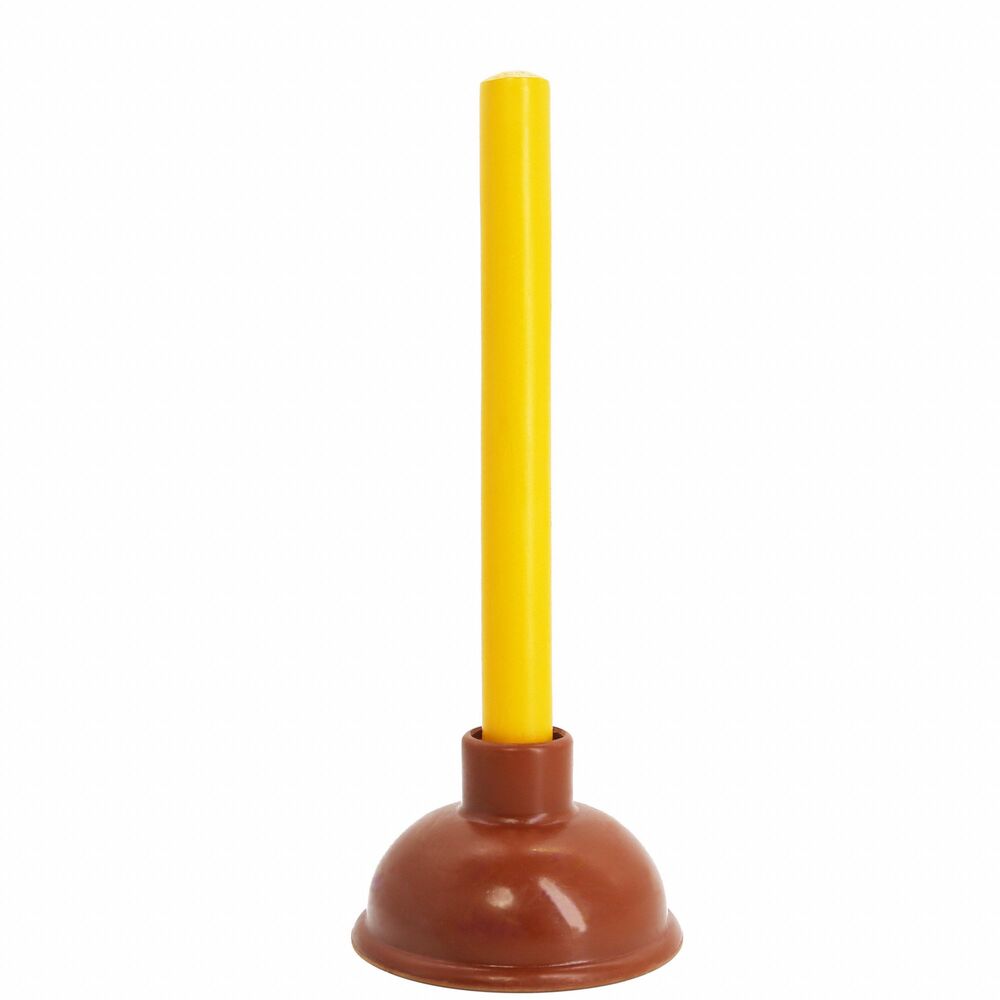
If you still have some hair that is left behind, it’s time to try a cup or “flat” plunger. This rubber/wooden tool is easy to get at any store including Home Depot and Amazon.
The rubber cup is flat and wide, which makes it effective for creating a seal over flat surfaces like sinks, bathtubs, and some types of toilets.
The flat plunger works by using suction and pressure to dislodge clogs. When you press the plunger down over the drain or toilet opening and then pull up quickly, it creates a vacuum effect that can help loosen and remove the clog.
The rubber cup’s design and shape make it particularly suitable for use on flat surfaces, as it can cover the drain or toilet opening more effectively than other types of plungers. If the clog is still present, repeat this process as necessary. [1]
3. Use tweezers or needle-nose pliers
If you see that hair is coming up, but somehow it’s still stuck due to the stringy nature of the hair, you should reach for tweezers or needle-nose pliers. In case you have some drain stopper make sure that you remove it before any work.
These tools will give you a wider range of motion and you will be able to grab pieces of hair from your drain. Pull your hair patiently and throw it in some garbage bag. Use your flashlight as needed.
Alternative tools you can use to reach hair are:
- Bent wire hanger
- Zip tie or cable tie
- Disposable wooden stick
- Plastic Straw
- Vacuum with Hose Attachment
4. Buy Drain Snake

If you tried everything until now, from natural solutions to using tweezers, you should consider plumbing a drain snake.
The snaking device is well known for breaking drains clogged with hair. Usually, they are plastic foldable zip-it tools, that you can buy almost everywhere for a few bucks.
They are easy to use and made in different sizes. You can try to use more of them in case your hairball is really stubborn. After cleaning the drain with a snake, you should pour some boiled water, baking soda, or vinegar to make sure that all hair is gone.
5. Remove Drain Completely
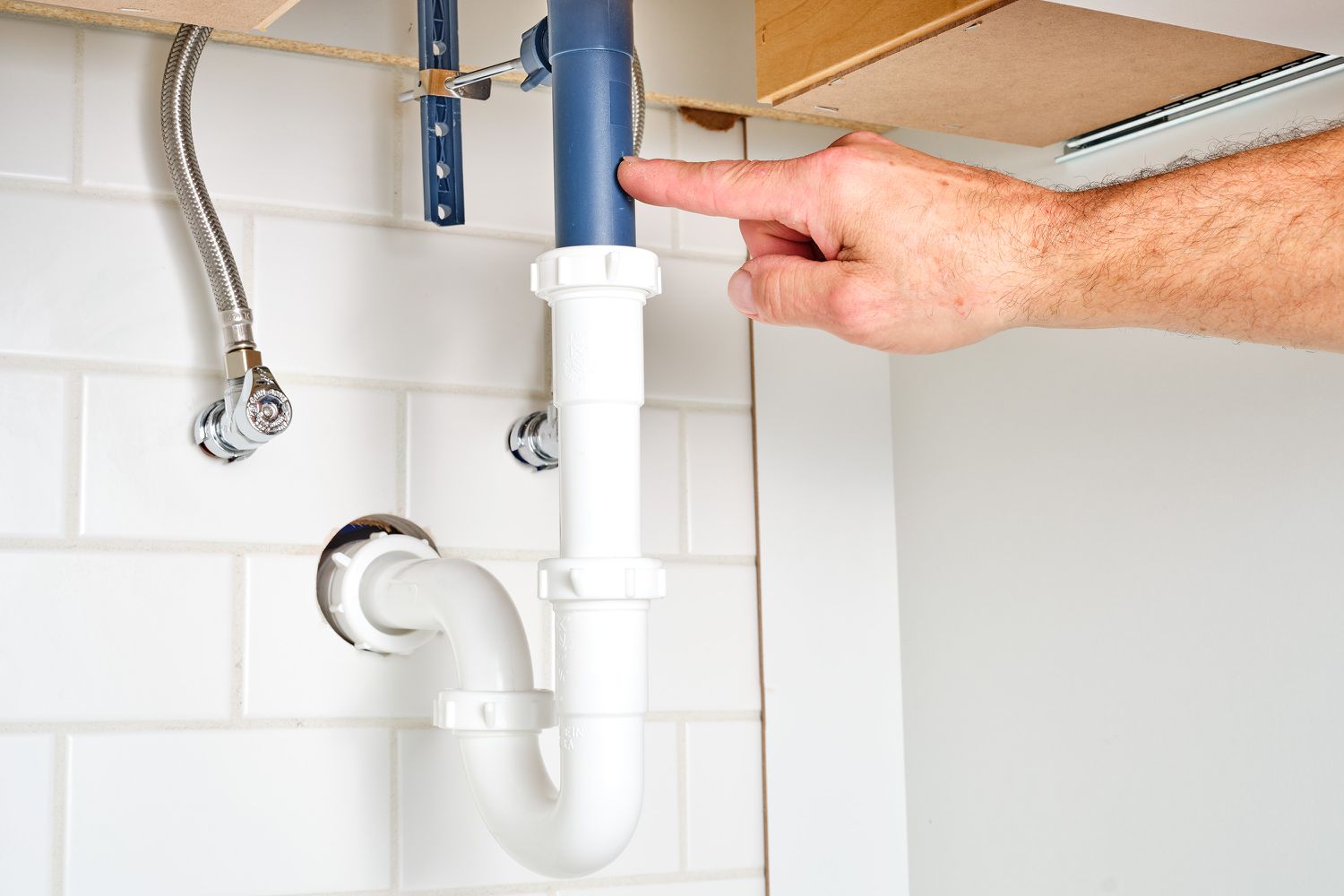
This is the most difficult thing to do, but it’s your last option before calling a professional plumber.
In case nothing works, you may try to remove your S trap or P trap entirely and clean it separately.
There will be water inside the “curve” so make sure that you place some plastic bowl below.
There are two fittings that need to be loosened up.
If they are too tight, you can use channel locks. Let them open, and let the water drain a little bit. Keep losing it little by little until it comes apart.Then pull it down, and you will see the hair being clogged inside.
On the back side, you may see the metal bar going to drain off your sink. This is the lever, that opens and closes the drain using the handle below the sink. [2]
6. Call Professionals
If you’re dealing with a persistent drain clog or are uncomfortable handling it yourself, it’s a smart choice to reach out to professional drain cleaning services. Begin by researching reputable plumbing companies or drain cleaning services with positive customer reviews and proper credentials.
Contact the chosen service and explain the issue you’re facing, detailing the type of drain and any symptoms you’ve observed. Inquire about pricing and schedule an appointment at your convenience for the plumber to assess or resolve the clog.
Before the appointment, clear the area around the affected drain and have your questions ready for discussion.
After the service is completed, review the work with the plumber, and consider their recommendations for avoiding future clogs. This professional approach can help ensure an effective and lasting solution for your drain issue.
How To Prevent Drain Clogged With Hair
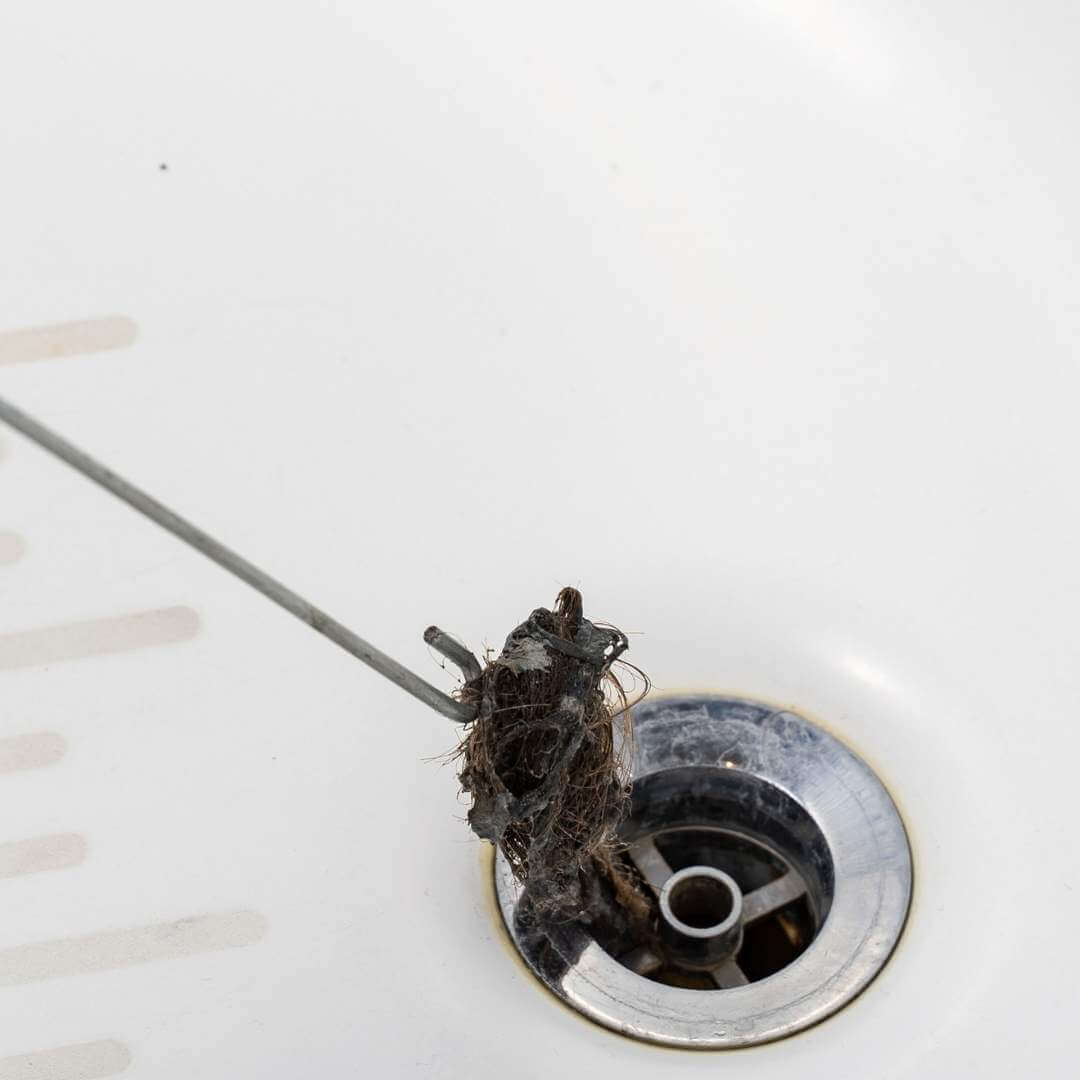
To prevent drains from getting clogged with hair, consider implementing these practices:
1. Use a Drain Strainer: Install a drain strainer or hair catcher in your sinks, showers, and bathtub drains. These devices prevent hair from entering the drain and causing clogs.
2. Regular Cleaning: Clean your drains regularly by removing visible hair and debris near the surface. This reduces the likelihood of buildup that can lead to clogs.
3. Brush Hair Before Showering: Brush your hair before you shower or bathe. This can help remove loose hair that might otherwise end up down the drain.
4. Tie Up Long Hair: If you have long hair, consider tying it up or using a hairband to prevent excessive hair from falling into the drain.
5. Empty Hairbrushes Over Trash Bins: When cleaning your hairbrush, do it over a trash bin instead of a sink. This prevents loose hair from entering the drain.
6. Rinse Well: After using hair products like shampoos, conditioners, and styling products, make sure to rinse your hair thoroughly to prevent product buildup in the drain.
7. Flush with Hot Water: Regularly flush your drains with hot water. This can help dissolve any soap scum and keep hair from sticking to the pipes.
8. Use Baking Soda and Vinegar: Occasionally, pour a mixture of baking soda and vinegar down the drain, followed by hot water. This can help keep drains clean and prevent clogs.
9. Clean Pets Outside: If you have pets that shed hair, try to clean them outside to prevent pet hair from accumulating in your indoor drains.
10. Professional Drain Cleaning: Consider scheduling professional drain cleaning periodically. This can help remove any buildup and ensure your drains are in good condition.
11. Avoid Pouring Grease and Oil: Avoid pouring grease, cooking oil, or other substances down the drain, as they can trap hair and cause clogs.
12. Educate Family Members: Teach everyone in your household about proper drain care to ensure that they are aware of the steps to prevent clogs.
By following these preventive measures, you can significantly reduce the likelihood of hair clogs in your drains and maintain a smooth-flowing plumbing system.
Related: Home Remedies for Clogged Drains
Conclusion
In conclusion, preventing drains from becoming clogged with hair involves adopting a combination of proactive practices and mindful habits. By implementing measures such as using drain strainers, regular cleaning, and rinsing thoroughly, you can effectively minimize the risk of hair clogs.
Simple actions like brushing hair before showering and disposing of hair properly can go a long way in maintaining clear drains. Remember, a little effort and awareness can spare you the inconvenience of dealing with clogs and ensure the smooth functioning of your plumbing system.
Read Next: House Smells Like Gas But Have Electric Water Heater

Michael Davis is a heating & plumbing expert who currently works as independent contractor in SC. He also writes for Plumbertip.
For almost 10 years he worked on various plumbing tasks across South Carolina.


